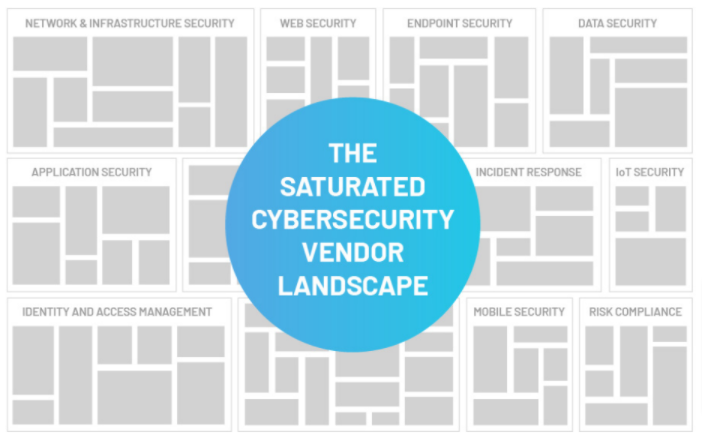The 3 Key Areas in Cyber Security Today

Cyber security is a market plagued by acronyms, especially on the networking side. This doesn’t simplify matters. The real problem is that the security technology landscape, like its lingo, is too complex. How can anyone with their back against the wall make sense of the options presented to them in the Cyberscape? The reality is that we need to get back to basics. What businesses large and small need to be asking is: what’s essential to maintain business continuity safely and securely?
Don’t let the Cyberscape fool you. When it all boils down, cyber security can be fundamentally bucketed into three areas:
- Network Security
- Endpoint Security
- Application Security
While security software vendors have made the subcategorization of these areas into a cottage industry, this overarching security trilogy is pretty straightforward. In essence, companies should seek to secure their networks, the devices in use across those networks, and the business applications in use across those devices.
Network Security
Simply put, network security is a set of rules and configurations designed to protect computer networks and the data in transit across them via software and hardware. Organizations large and small require a degree of network security to protect it from the proliferation of cyber threats we covered earlier.
Network security typically consists of three different controls: physical, technical and administrative. Physical security controls are designed to prevent unauthorized personnel from gaining physical access to network components such as routers, wiring closets and so on.
Technical security controls protect data that is stored on the network or which is in transit across, into or out of the network. Protection is twofold: it needs to protect data and systems from unauthorized personnel, and it also needs to protect against malicious activities from employees, contractors and guests on the network.
Administrative security controls consist of security policies and processes that control user behavior, including how users are authenticated, their level of access and also how the IT department can implement changes to the infrastructure.
Endpoint Security
Endpoint security is the practice of protecting enterprise networks against threats originating from on-premises or remote devices. An endpoint is any device that provides an entry point to corporate assets and applications and represents a potential cyber security vulnerability. Examples include desktops, laptops, servers, workstations, smartphones and tablets.
Historically, most organizations have relied on tools such as firewalls, VPNs, and antivirus programs to safeguard sensitive information, prevent unauthorized access to critical applications and IT systems, and protect against malicious software and other vulnerabilities.
As we’ve touched on, however, companies are increasingly adopting mobile applications and cloud services that erode the once well-defined enterprise network perimeter. Many enterprises are now taking a defense-in-depth approach to endpoint protection, instituting a wider range of security controls to protect against a broader array of threats.
Application Security
Application security is the discipline of processes, tools and practices aiming to protect applications from threats – both internal and external to an organization. Cyber threat actors exploit vulnerabilities in enterprise applications to capture data, intellectual property, and more – often with impunity. Application security can help organizations protect all kinds of applications (such as legacy, desktop, web, mobile, etc.) used by corporate stakeholders including customers, business partners and employees.
Most successful breaches target vulnerabilities that reside in the application layer, such as the recent log4j vulnerability. As a result, IT teams must be extra vigilant about application security. To further compound the problem, the number and complexity of applications is growing, as is the number of devices and device types running them.
Try Portnox Cloud for Free Today
Gain access to all of Portnox's powerful zero trust access control free capabilities for 30 days!








